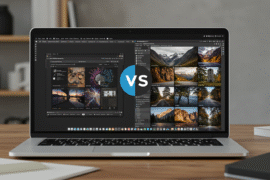This article may contain references to products or services from one or more of our advertisers or partners. We may receive compensation when you click on links to those products or services. Nonetheless, our opinions are our own.
The correct equipment can have a huge impact in the business world, particularly in sectors like mining, construction, and logistics. You might be eyeing a new excavator or a fleet of trucks, but the price tags can be daunting. That’s where heavy equipment financing comes into play. Understanding your options can empower you to make informed decisions that support your growth and efficiency. This guide is designed to walk you through the various financing solutions available, helping you navigate the terms and conditions that can sometimes feel overwhelming. Whether you’re a seasoned business owner or just starting out, we’ll break down everything you need to know to finance heavy equipment effectively—so you can focus on what you do best: running your business. Let’s dive in and explore the pathways that can lead you to the equipment you need without stretching your budget to its breaking point.
Understanding Heavy Equipment Financing Options for Your Business
When it comes to financing heavy equipment, you have a variety of options to consider that can align with your business goals and cash flow. Understanding each of these choices can help you make informed decisions. Here are some common financing avenues you may explore:
Equipment Loans
These loans allow you to borrow money specifically to purchase heavy equipment. The equipment usually serves as collateral, leading to lower interest rates.
Leasing
Instead of purchasing outright, leasing allows you to use the equipment for a specified period while making regular payments. This can free up capital and may come with tax advantages.
Credit Lines
Establishing a business line of credit can provide versatility. You can withdraw funds for equipment purchases without committing to a fixed loan amount.
To help visualize the benefits of each option, let’s look at a simple comparison table:
| Option | Pros | Cons |
|---|---|---|
| Equipment Loans | Ownership after payment | Higher monthly payments |
| Potential tax deductions | Debt obligation increases | |
| Leasing | Lower initial costs | No ownership |
| Access to the latest equipment | Long-term costs may add up | |
| Credit Lines | Flexible funding | Variable interest rates |
| Pay only what you use | Potential for over-reliance |
Each option has its merits and drawbacks, and the best choice often depends on your unique business needs and financial situation. You can secure the right heavy equipment by evaluating these financing methods without jeopardizing your financial stability.
Assessing Your Business Needs Before Pursuing Financing
Before diving into financing options for heavy equipment, taking a step back and evaluating your business needs is crucial. Understanding the specific requirements of your operations can save you both time and money. Here are some key considerations:
- Equipment Type: Identify the exact machinery you need and how it aligns with your business operations. Do you require new or used equipment?
- Usage Frequency: Assess how often you’ll use the equipment. Will it be a daily necessity or only for specific projects?
- Budget Constraints: Determine your budget for both the purchase and ongoing maintenance. This will help narrow down your financing options.
- Growth Plans: Consider your future business growth. Will the equipment be sufficient for your expected expansion, or will you need to re-evaluate in the near future?
Once you’ve sorted through these factors, creating a simple comparison table can help clarify your options:
| Equipment | New/Used | Estimated Cost | Financing Option |
| Excavator | New | $100,000 | Lease |
| Bulldozer | Used | $60,000 | Installment Loan |
| Loader | New | $75,000 | Cash Purchase |
This table is a quick reference to help you visualize your choices more clearly. By fully understanding your needs, you can make informed decisions and select financing that supports your business’s long-term goals.
Exploring Different Financing Paths and Their Benefits
When considering financing options for heavy equipment, you’ll encounter various paths, each tailored to meet specific business needs. Here are a few popular methods:
- Equipment Loans: These provide you with the capital to purchase equipment outright. You own the equipment from day one, allowing you to build equity over time.
- Leasing: This option lets you use the equipment without a large initial investment. Leasing often includes maintenance, making it an all-in-one solution that keeps your cash flow steady.
- Hybrid Solutions: Some businesses combine loans and leases, giving you flexibility. You might own core equipment while leasing specialized tools, balancing costs and ownership.
| Financing Option | Benefits |
| Equipment Loans | Ownership and equity building |
| Leasing | Lower upfront costs, maintenance included |
| Hybrid Solutions | Cash flow management, flexibility |
By assessing your business’s unique financial situation and operational goals, you can select a path that fits your budget and empowers your growth. Always weigh the long-term implications against immediate needs, and consult with a financial advisor if you’re uncertain about the best direction.
Understanding the dynamics of interest rates and loan terms is essential when financing heavy equipment for your business. Interest rates can considerably affect your monthly payments and the overall cost of your financing. Generally, lower interest rates mean lower payment amounts, but obtaining favorable rates often depends on your credit score, the lender, and current market conditions. It’s advisable to shop around, as offers can vary widely. Don’t hesitate to negotiate; sometimes, a simple conversation can yield a better deal.
Key Loan Considerations:
- Length of the Loan: Shorter terms typically lead to higher monthly payments but result in less total interest paid.
- Amortization Schedule: Understand how principal and interest work together over time to influence your payments.
- Prepayment Options: Check for penalties for paying off the loan early; this flexibility can save you money later on.
To help visualize your potential payments, consider the following table:
| Loan Amount | Interest Rate | Monthly Payment (5 Years) |
| $50,000 | 5% | $943 |
| $50,000 | 7% | $1,014 |
| $50,000 | 10% | $1,067 |
Arming yourself with this knowledge will not only empower you in negotiations but also aid in crafting a financial strategy that aligns with your business goals. Think of it as setting a strong foundation for your investment, ensuring that you achieve the best possible outcomes for your heavy equipment financing.

Reviewed and edited by Albert Fang.
See a typo or want to suggest an edit/revision to the content? Use the comment form below for feedback.
At FangWallet, we value editorial integrity and open collaboration in curating quality content for readers to enjoy. Much appreciated for the assist.
Did you like our article and find it insightful? We encourage sharing the article link with family and friends to benefit as well - better yet, sharing on social media. Thank you for the support! 🍉
Article Title: Heavy Equipment Financing Guide for Businesses
https://fangwallet.com/2025/03/16/heavy-equipment-financing-guide-for-businesses/The FangWallet Promise
FangWallet is an editorially independent resource - founded on breaking down challenging financial concepts for anyone to understand since 2014. While we adhere to editorial integrity, note that this post may contain references to products from our partners.
The FangWallet promise is always to have your best interest in mind and be transparent and honest about the financial picture.
Become an Insider

Subscribe to get a free daily budget planner printable to help get your money on track!
Make passive money the right way. No spam.
Editorial Disclaimer: The editorial content on this page is not provided by any of the companies mentioned. The opinions expressed here are the author's alone.
The content of this website is for informational purposes only and does not represent investment advice, or an offer or solicitation to buy or sell any security, investment, or product. Investors are encouraged to do their own due diligence, and, if necessary, consult professional advising before making any investment decisions. Investing involves a high degree of risk, and financial losses may occur including the potential loss of principal.
Source Citation References:
+ Inspo
There are no additional citations or references to note for this article at this time.












































